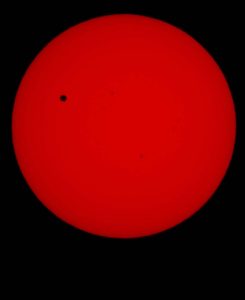27 May 2016
According to a NASA press release dated May 10, 2016, more than 3,200 exoplanets (planets outside Earth’s solar system) have been verified. But only 21 of these orbit their stars in the “habitable zone” where the planet’s surface temperatures would allow liquid water to pool. Such temperatures would be required to support life of the sort envisioned by GAILEarth.com.
Of these 21 exclusive worlds, none appears suitable for human life because they are too massive. In Stephen Dole’s Planets for Man (written with Isaac Asimov), the authors reason that any planet with a gravitation field of more than 1.5 times earth’s would not be anyplace we would like to live. They estimate the largest planet suitable for settlement would be 25 percent larger in diameter than Earth.
Unfortunately, the smallest planet found in the habitable zone of a Sun-like star is about 60 percent larger in diameter than Earth, according to a NASA release dated July 23, 2015. Such a planet would probably have a surface gravitation of 1.6g or even more if its density were higher than Earth’s. That planet, dubbed Kepler-452b by NASA, lies 1,400 light-years from our home world.
The reason astronomers haven’t found more Earth-sized planets is partly because the techniques used to look for them aren’t well suited to finding relatively small planets. There are three main ones: radial velocity, transit photometry, and microlensing. The Planetary Society website has a good explanation of each.
Radial velocity measures the wobble of a star caused by planets orbiting it. Massive planets shake their stars a lot, causing the radial velocity changes to be significant. A relatively small planet like Earth wouldn’t move its star much compared with the effects of big planets like Jupiter or Saturn. Wobble also is stronger when a massive planet orbits close to a star, well inside the habitable zone.
Transit photometry measures the dimming of a star’s light when a planet passes between the observer and the star. If the planet is large, like Jupiter or Saturn, the dimming is significant. But if the planet is relatively small, the dimming of the star is tough to measure.

According to NASA, 2,325 of the 3,200 verified exoplanets were discovered by the Kepler orbiting telescope. Kepler uses transit photometry to detect them. But Kepler was designed to focus on a relatively small sector of the sky in the constellations of Cygnus and Lyra, according to NASA’s Mission Statement. The rest of the heavens have yet to be explored.
Microlensing relies on the bending of light by the mass of a star or exoplanet when another star lies directly behind it. It has been used to detect exoplanets that are five times Earth’s mass at distances of 22,000 light years. Gravity on a planet five times Earth’s mass is of course too strong for people. Furthermore, astronomical events needed for microlensing are not repeatable, so corroborating studies are hard to do.
Even though current methods of exoplanet discovery haven’t found worlds suitable for us to settle, they have revealed much about the structure of other star systems. Planets come in an incredible array of sizes and orbits that we could not have imagined even 25 years ago.
As new instruments make the techniques of finding exoplanets more sensitive, scientists are likely to find smaller ones in habitable zones. NASA’s forthcoming Transiting Exoplanet Survey Satellite (TESS) will employ more sensitive transit photometry aimed at stars closest to our Sun.
